We may earn money or products from the companies mentioned in this post. This means if you click on the link and purchase the item, I will receive a small commission at no extra cost to you ... you're just helping re-supply our family's travel fund.
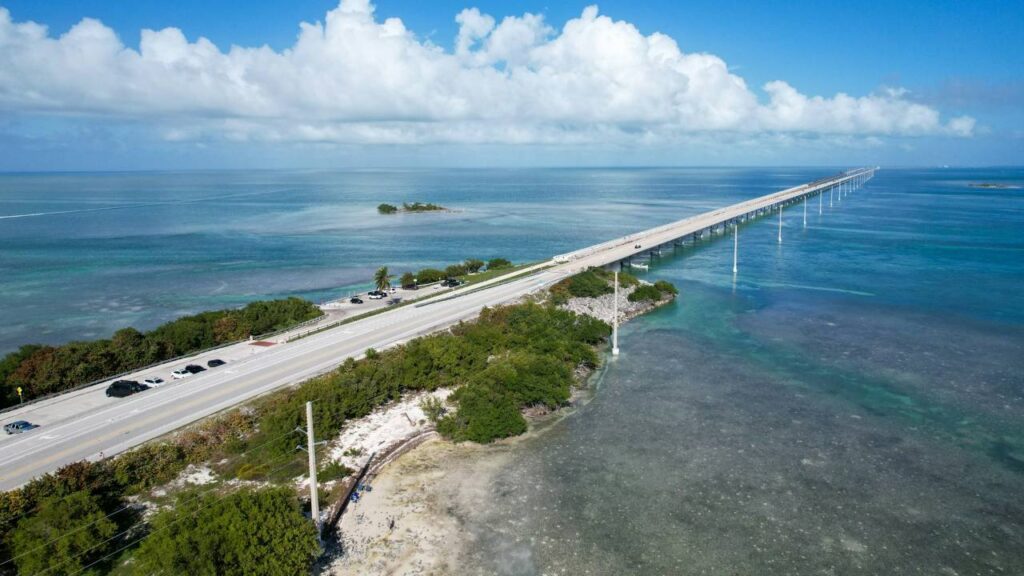
Driving the Overseas Highway feels like floating between an endless sky and a sea of impossible turquoise. You’ll see it running parallel to your modern road, a fractured, silent sentinel from a bygone era. This is Florida’s legendary Bridge to Nowhere, a concrete and steel relic marching into the sea before abruptly stopping. More than just a ruin, this bridge is a monument to staggering ambition, a survivor of nature’s fury, and a tangible link to the stories that shaped the Florida Keys.
A Road Trip Through Time
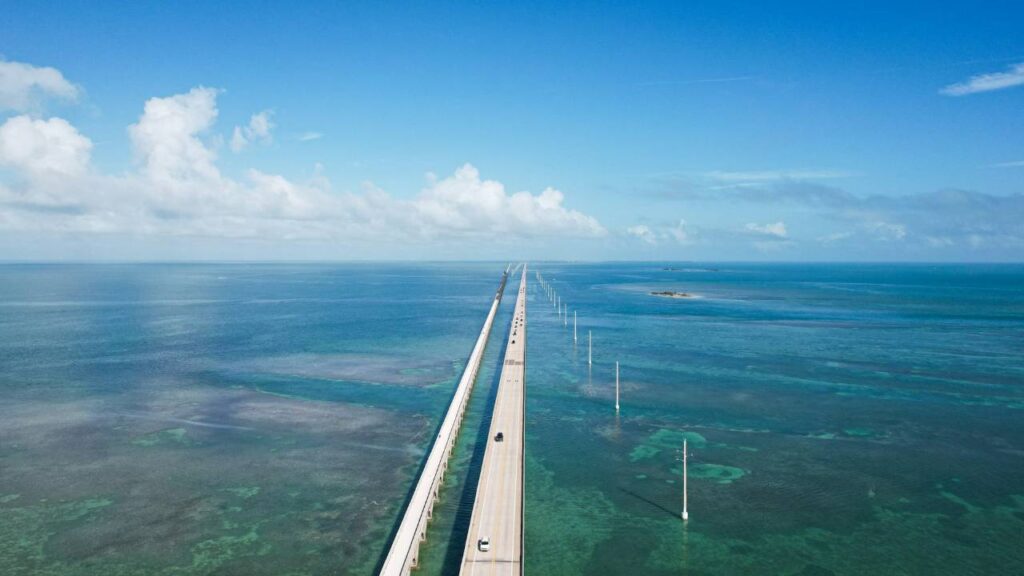
Your drive through the Keys is a trip through time. To one side, the sleek, modern Seven Mile Bridge hums with traffic, a testament to contemporary engineering. To the other, its predecessor stands in weathered silence, its gapped and broken path telling a much older story. For decades, that narrow ribbon of asphalt was the only road, itself laid over an even older railroad. The contrast is powerful, a ghost of past journeys shadowing your own and reminding you just how wild this place once was.
The Dream of an Industrialist
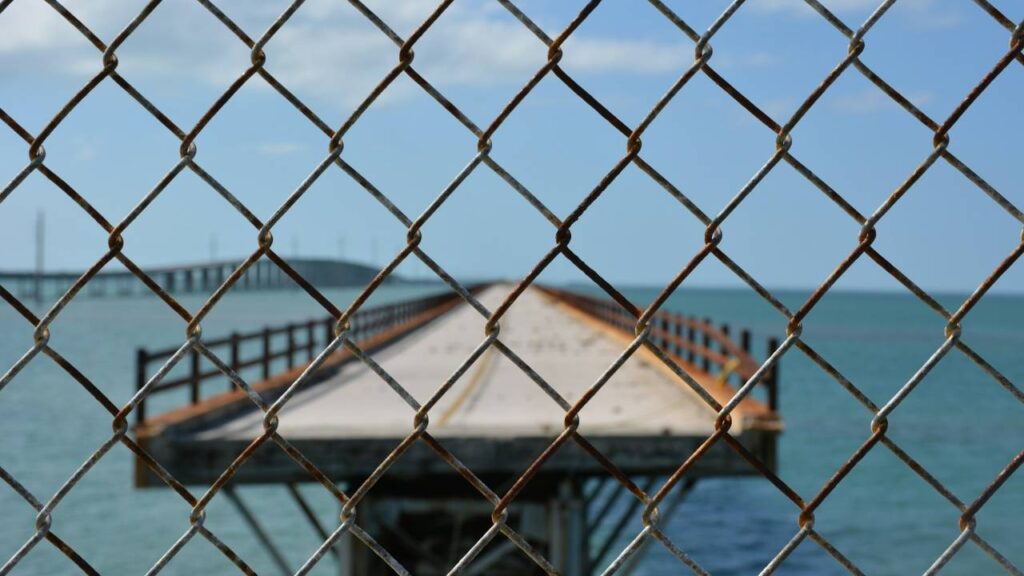
The bridge’s story begins with one man’s audacious dream. In the early 1900s, oil and railroad magnate Henry Flagler decided to extend his Florida East Coast Railway from Miami all the way to Key West, a project most engineers of the day called impossible. His goal was to connect the mainland to Key West’s deep-water port, the closest to the new Panama Canal. This “Over-Sea Railroad” was the final, most ambitious piece of his Florida empire, and this bridge is its most dramatic artifact.
An Engineering Marvel For Its Day
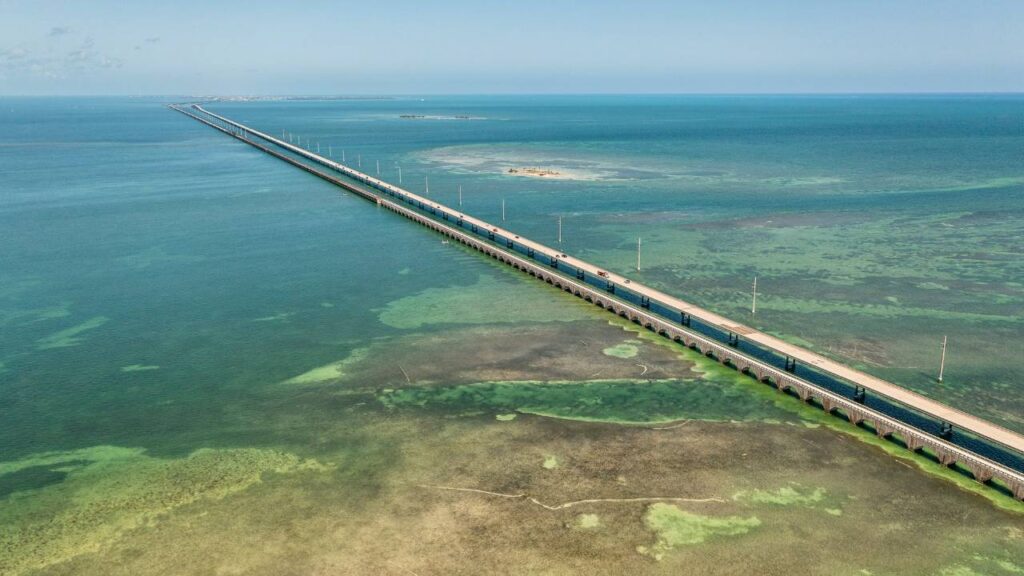
Imagine the challenge: building more than 150 miles of railway over open ocean a century ago. Workers toiled in punishing heat and remote isolation, battling swarms of mosquitos, tropical diseases, and the constant threat of hurricanes. Lacking modern machinery, they mixed concrete by hand and sunk pilings into the unstable coral rock bed. When the railroad opened in 1912, it was celebrated as the “Eighth Wonder of the World,” a hard-won tribute to the thousands of laborers who made Flagler’s vision a reality.
Storms That Tested Everything
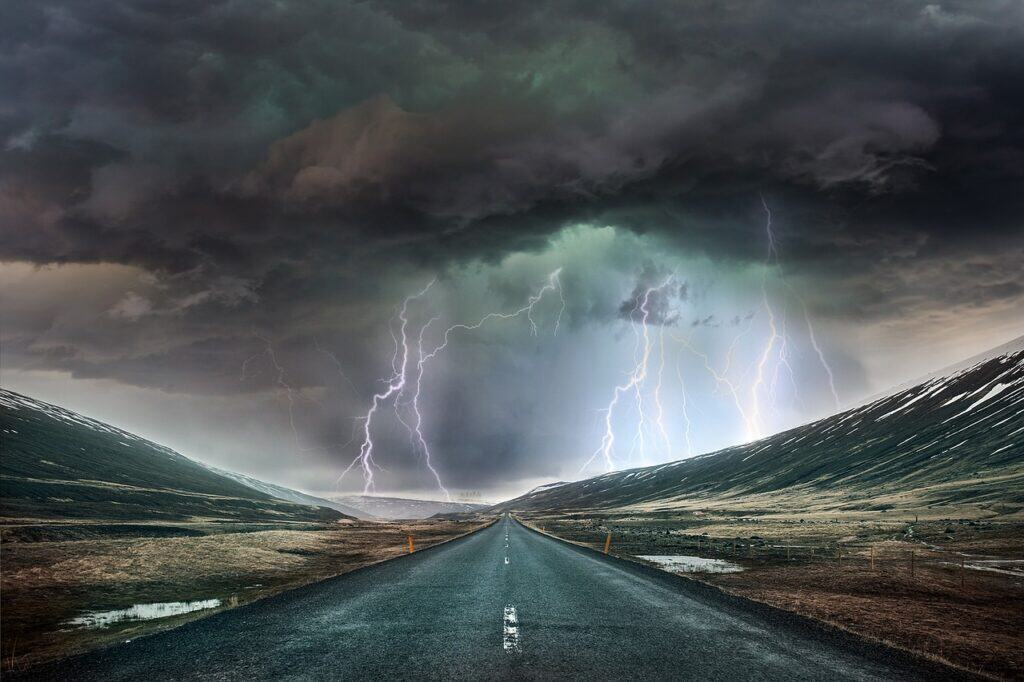
The Keys are no stranger to tropical violence, and the bridge has faced impacts that would have erased lesser structures. Hurricanes regularly battered the line with monstrous winds and storm surge, snapping track, sweeping away buildings, and isolating work crews for weeks. Each season felt like borrowed time. The fact that so much of the original steel and concrete still stands today speaks to the grit of its builders and the stubbornness of materials set by hand more than a century ago.
From Rails to Roadways
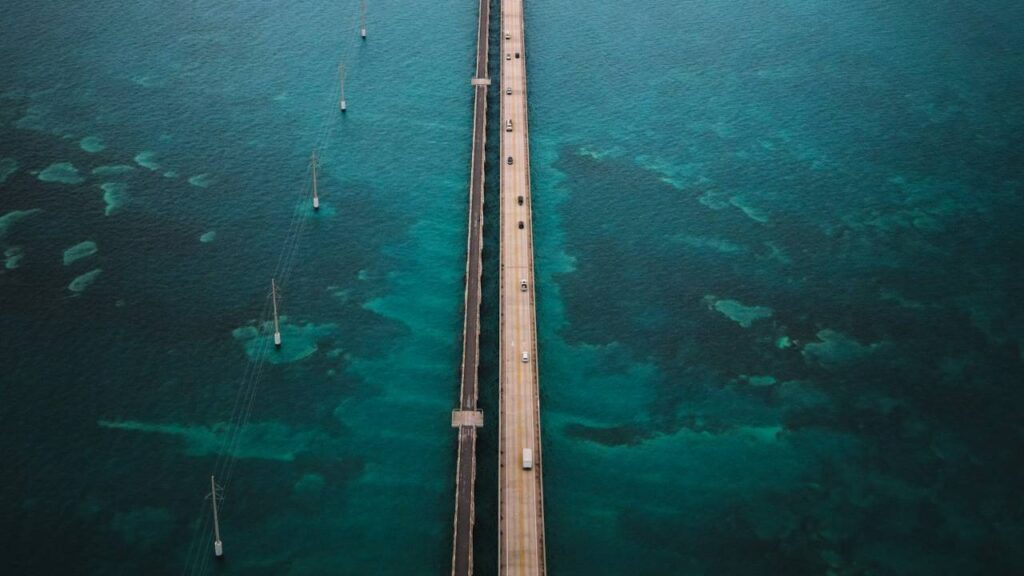
After the hurricane, the state of Florida saw an opportunity in the wreckage. It purchased the entire right-of-way, including the surviving bridges, from the bankrupt railway. In a brilliant feat of adaptive reuse, engineers simply laid a wide concrete road deck on top of the old railroad trusses to create a highway. From 1938 until 1982, this very structure served as the official Overseas Highway, carrying the first generations of automobile tourists on their sun-seeking adventures south.
Pigeon Key: The Island Under the Bridge
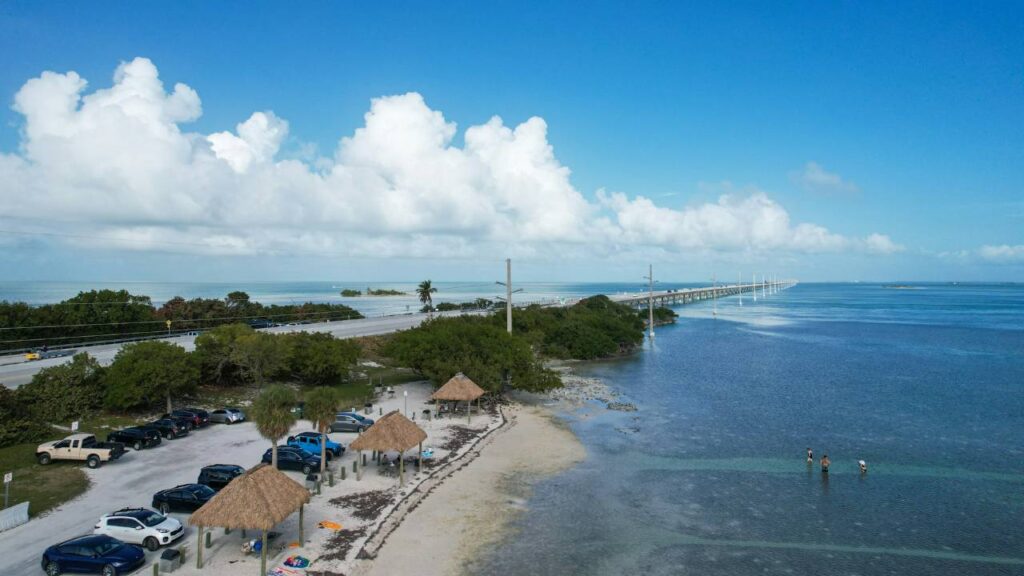
Your walk on the restored Marathon bridge leads to a hidden chapter of its history. Tucked beneath the main span is Pigeon Key, the tiny five-acre island that served as the primary work camp for the hundreds of men who constructed the original bridge. Today, the historic outpost is a museum, its preserved bunkhouses and commissary offering a raw and fascinating glimpse into the lives of the workers. It’s a quiet place that holds the very human story behind the epic engineering feat looming above.
Sunset Over a Silent Sentinel
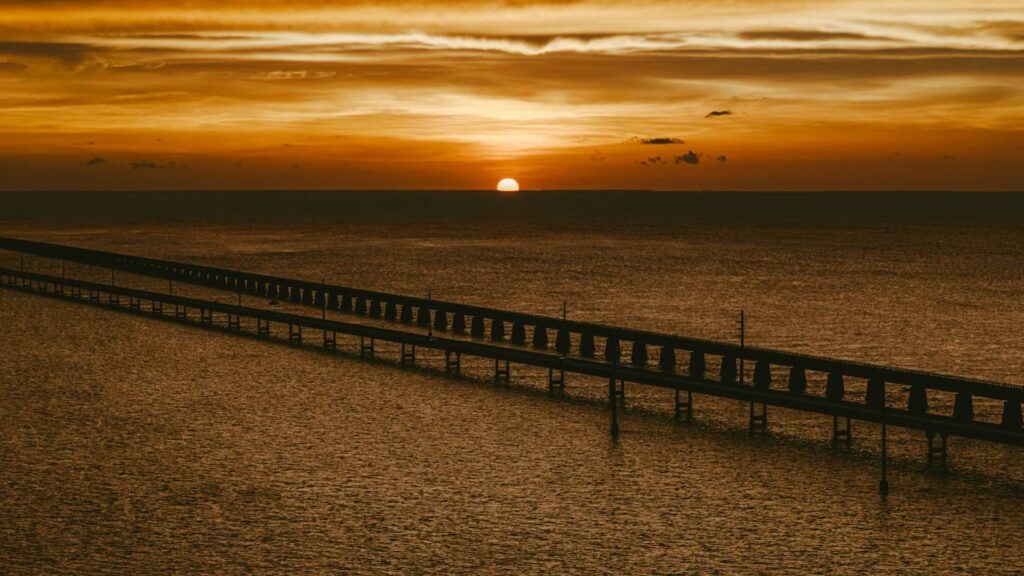
There may be no better place in the Florida Keys to watch the day end. As the sun dips toward the Gulf of Mexico, it backlights the bridge’s skeletal frame against a sky washed in fiery shades of orange, pink, and purple. The structure transforms into a stark and beautiful silhouette, a silent guardian watching over the channel. It is a moment of profound peace, connecting you to every traveler who has ever paused to watch this same sun set over this very same, timeless structure.